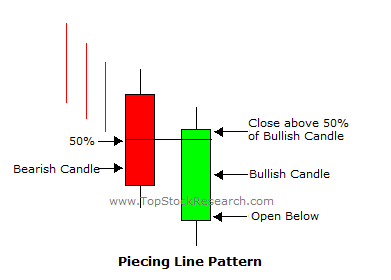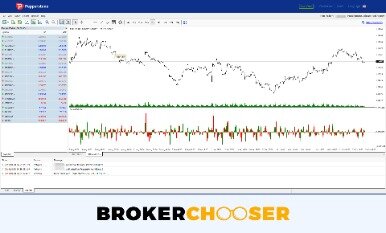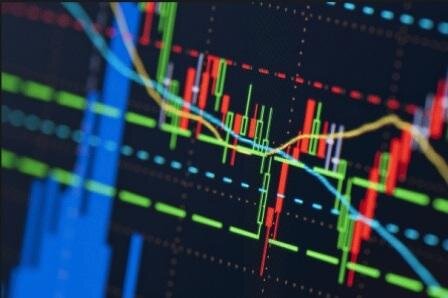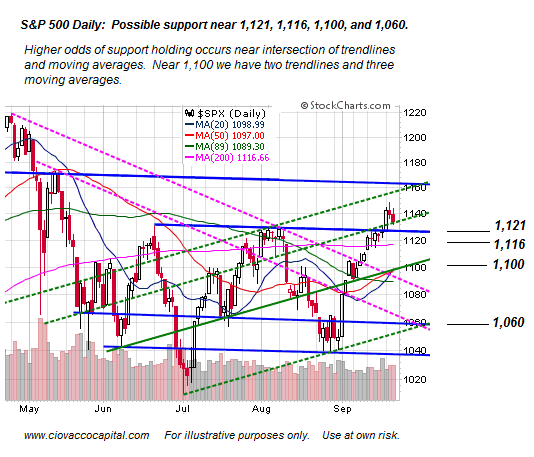Contents:


https://trading-market.org/, the Average Directional Index helps traders… The Keltner Channel or KC is a technical indicator that consists of volatility-based bands set above and below a moving average. Markets with high price fluctuation offer more risk/reward potential, because prices rise and fall in a short time, giving the trader more opportunities to buy or sell. The ATR can also give a trader an indication of what size trade to use in the derivatives markets. It is possible to use the ATR approach to position sizing that accounts for an individual trader’s willingness to accept risk and the volatility of the underlying market.
Keltner Channel – Technical Indicator (2023 Guide) – AskTraders
Keltner Channel – Technical Indicator (2023 Guide).
Posted: Tue, 09 Jun 2020 16:00:04 GMT [source]
The readings are then plotted on a graph to form a continuous line, giving traders an idea of how volatility has fluctuated over time. In practice, the usual value given for n is 14 days or 14 periods. However, professionals use different settings to find intraday, daily, weekly, or monthly values. Sometimes it can be a period below 10 to calculate a shorter average or a period more than 20 days for assessing longer-term volatility. Second, ATR only measures volatility and not the direction of an asset’s price.
Trading with average true range
The MACD is measured by subtracting the exponential moving average of 26 periods from the EMA of 12 periods. Day traders may use the ATR for defining the profit goals in the stock market. Day traders may use statistics about how fast stock usually changes in a given timeframe to determine benefit goals and decide whether or not it will enter a deal. There is no major news to report, but the stock is up to $1.11 for the day. As such, the ATR is a valuable tool for providing traders with entry and exit points. While calculating an investment’s ATR is relatively simple, still, employing this indicator alongside other technical analysis devices is highly recommended.
Volatility Ratio Definition – Technical Analysis – Investopedia
Volatility Ratio Definition – Technical Analysis.
Posted: Sun, 26 Mar 2017 06:33:05 GMT [source]
The Average True Range indicator identifies periods of high and low volatility in a market. Futures and futures options trading involves substantial risk and is not suitable for all investors. Please read theRisk Disclosure Statementprior to trading futures products.
FAQs about the ATR indicator
So, the high minus the low provides the current true range. N.B. This first value is the first in the time series and is n periods from the beginning of the chart. A 100 dollar stock will have ATR values double those of a 50 dollar stock assuming both are equally volatile.
Using Bollinger Bands to Gauge Trends – Investopedia
Using Bollinger Bands to Gauge Trends.
Posted: Fri, 27 Apr 2018 15:06:40 GMT [source]
They use different formulas, and therefore one may be better suited to a particular style of trading than another. Similarly, ATR can be used to determine where to set profit targets and stop losses. If a market moves 20 points each day, then targeting a 50-point profit from the current session might be unrealistic. The standard ATR setting is 14, so it calculates the average of the true range over the past 14 periods. The idea of ranges is that they show the commitment or enthusiasm of traders.
Futures and forex accounts are not protected by the Securities Investor Protection Corporation . Master excel formulas, graphs, shortcuts with 3+hrs of Video. INVESTMENT BANKING RESOURCESLearn the foundation of Investment banking, financial modeling, valuations and more. CryptocurrenciesCryptocurrency refers to a technology that acts as a medium for facilitating the conduct of different financial transactions which are safe and secure. It is one of the tradable digital forms of money, allowing the person to send or receive the money from the other party without any help of the third party service.
Absolute ATR
No long positions are taken when price is below the 63-day exponential moving average, nor short positions when above the 63-day exponential moving average. Like most other technical analysis tools, the ATR indicator also comes with its own distinct advantages and disadvantages. To effectively implement this technical indicator in your trading strategy, it’s essential to understand where it triumphs and where it can fall short. As mentioned above, the ATR indicator can be used to form an exit strategy by placing trailing stop-losses. A rule of thumb is multiplying the current ATR by two to determine a prudent stop-loss point.
Depending on the example, we can say that it wouldn’t be a good idea to sell the stocks or go short. Using ATR in your trading practice, remember that it is not a directional indicator and measures only volatility. Moreover, the ATR is a subjective measure and it can’t be used as a standalone indicator, giving you some insights of whether the trend is about to reverse or not. Still, the ATR is a great tool, when it comes to adapting to ever-changing market environment. The ATR indicator is most commonly used as a stop loss tool. When the ATR is high, traders are prepared for greater volatility and wider price fluctuations.

The indicator does not provide an indication of price trend, simply the degree of price volatility. Low values of the indicator are typical for the periods of sideways movement of long duration which happen at the top of the market and during consolidation. Futures, futures options, and forex trading services provided by Charles Schwab Futures & Forex LLC. Trading privileges subject to review and approval. Forex accounts are not available to residents of Ohio or Arizona. While the possibility of comparing the true range based volatility across different securities is characteristic of APTR, it may be equally useful when applied to a single symbol.
Interested in Blockchain Careers? Explore an Exciting Cryptocurrency World
The average true range calculation is relatively simple. The ATR moves up and down as the price movement becomes larger or smaller. It uses historical price data, so as soon as a new time period passes, it generates a new value. For example, on a one-minute technical chart, a new reading is calculated each minute, while on a daily chart, a new reading is generated each day. The average true range is a type of moving average that was developed in 1978 by American technical analyst J. He explained how to calculate the ATR in his book New Concepts in Technical Trading Systems.
- Choose “Add Indicator” and add a moving average to see an average of the data.
- We’re also a community of traders that support each other on our daily trading journey.
- FXOpen is a global forex and CFD broker, with a network of worldwide brokerages regulated by the FCA, CySEC and ASIC.
- This can sometimes result in mixed signals, particularly when markets are experiencing pivots or when trends are at turning points.
The average true range percent true range line on a chart rises as volatility increases and falls as volatility declines. As the ATR is not directional, it reflects an increase in volatility in either direction, with either buying pressure or selling pressure rising. A change in price direction while the line is rising suggests that there is strength behind the move.
Unless otherwise indicated, all data is delayed by 15 minutes. The information provided by StockCharts.com, Inc. is not investment advice. Trading and investing in financial markets involves risk. The Average True Range indicator can be used in scans to weed out securities with extremely high volatility. This simple scan searches for S&P 600 stocks that are in an uptrend. The final scan clause excludes high volatility stocks from the results.
- Moving Average Envelopes are lines plotted at a certain percentage above and below a moving average of price.
- The ATR typically calculates volatility over days, but it is also used to analyse intraday, weekly, or monthly volatility.
- Measuring market volatility can help in identifying buy and sell signals and, additionally, risk potential.
- Using 14 days as the number of periods, you’d calculate the TR for each of the 14 days.
- In other words, the stop loss has been placed below two or three days of typical movement.
Simply put, a stock experiencing a high level of volatility has a higher ATR, and a stock with a lower volatility has a lower ATR. Traders may use the indicator to enter and exit trades and to put a stop loss and take profit orders. The Average True Range trading strategy can be of great help when it comes to making trading decisions. Trading stocks, options, futures and forex involves speculation, and the risk of loss can be substantial. Clients must consider all relevant risk factors, including their own personal financial situation, before trading.
ATR formula
The ATR approach to position sizing can be used to account for an individual trader’s ability to tolerate risk as well as the fluctuations of the underlying sector. The market has now moved 31% faster than normal, and you already have a purchase signal from a company. The ATR indicator, as an effective measure of market’s volatility was introduced by a famous American technical analyst J. Welles Wilder Jr. in his book “New Concepts in Technical Trading Systems” in 1978. You should consider whether you understand how CFDs work and whether you can afford to take the high risk of losing your money.
A high ATR is typically generated by a sharp advance or decline in price. That heightened volatility is unlikely to be sustainable for extended periods. Trading high ATR stocks or other assets may help traders maximise chances for a successful trade during times of heightened volatility.
Although Wilder’s technical indicators were developed even before the digital age, they have withstood the time test and keep their extreme popularity among traders. The ATR indicator represents an N-period smoothed moving average of the true range values. Average True Range Trailing stops are far more volatile than stops based on moving averages and are prone to whipsaw you in and out of positions except where there is a strong trend. The RJ CRB Commodities Index late 2008 down-trend is displayed with Average True Range Trailing Stop and 63-day exponential moving average used as a trend filter.

The ATR typically calculates volatility over days, but it is also used to analyse intraday, weekly, or monthly volatility. The ATR was originally created for commodities, but it can also be used for stocks and indexes. ATR indicators for stocks can be used in several ways and for determining several things that occur in the stock marketplace. Simply stated, a stock with a high level of volatility has a higher ATR, whereas a stock with a low level of fluctuation has a lower ATR.
This can be useful when deciding whether to trade a signal provided by another indicator. ATR was originally invented for use on commodities, but traders now use it across multiple asset classes. The true range extends it to yesterday’s closing price if it was outside of today’s range.
FX trading can yield high profits but is also a very risky endeavor. Range refers to the high-low range of a bar of any timeframe — hourly, H4, daily, whatever. Wilder named it “true” range instead of plain old “range” to account for gaps. Actually, we get gaps on all timeframes, but they are noticeable only on lower timeframes.
